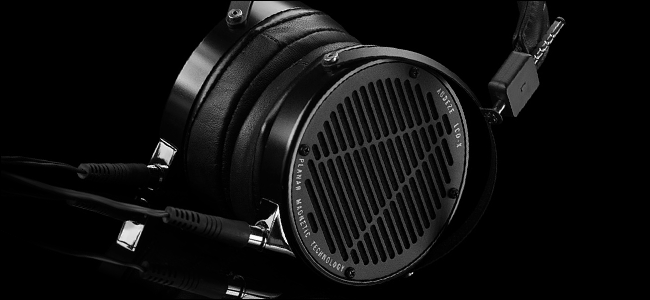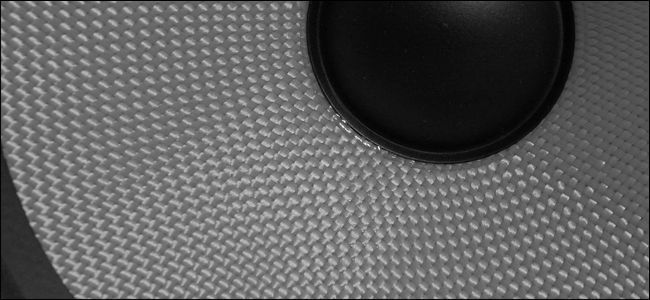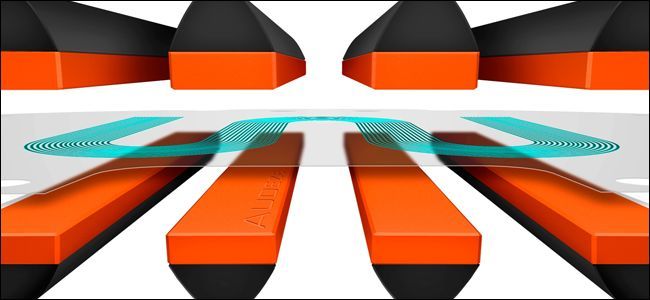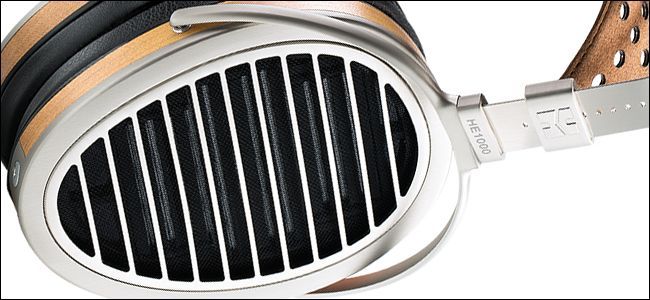Quick Links
The world of audiophile hardware is dense and hard to parse... and to be perfectly honest, audiophiles seem to like it that way. Even so, a technology called "planar magnetic drivers" is making its way into cheaper and more accessible headphones as of late, promising audio fidelity much greater than conventional cans. What makes planar magnetic headphones different---and allegedly better---than normal ones? Let's have a listen.
How Traditional Dynamic Headphones Work
To understand what planar magnetic headphones are, first you need to understand what they are not. To put it extremely simply, the drivers (speakers) inside headphones are powered by electromagnets. In the most common and inexpensive "dynamic" style of driver construction, an electrical current is sent through a tightly-wound coil. This coil is connected to a "cone" or "diaphragm"---the large, cone-shaped part of the speaker that's visible from the outside---and surrounded by a circular magnet.
Regulating the electrical current of the coil causes it to move up and down inside the donut-shaped magnet, thus moving the diaphragm, compressing and expanding air particles and creating sound waves that your ears pick up. Precisely controlling the electrical current that flows through the coil allows the driver to translate the electronic source into standard music and other audio.
In more uncommon and complex electrostatic drivers, the electric coil and the diaphragm are combined into a single part of the apparatus. Both parts are replaced with a a thin piece of electrically-charged material sandwiched in between two metal plates, one positive, one negative. This setup regulates the electrical charge via those outer plates, moving the inner material back and forth between positive and negative to vibrate the molecules in the air and create sound waves. Electrostatic drivers are generally much larger (since the "diaphragm" analog material has to be much larger to create the same audio volume) and are only found in headphones starting at $3000 and going way, way up.
How Planar Magnetic Drivers Are Different
Planar magnetic drivers mix some of the operating principles between dynamic and electrostatic drivers. In a planar magnetic setup, the part that actually creates sound is an electrostatic-style thin, flexible material sandwiched between the outer layers of the mechanism. But like a dynamic driver, that diaphragm contains extremely thin wires with electrical current flowing through it, which regulates its back-and-forth vibration.
What makes the whole setup work is a series of precise and evenly-spaced magnets on both sides of the thin, electrically-active diaphragm material. Hence the name, planar magnetic: magnets acting on a flat plane. The magnets are so precisely cut and spaced that the diaphragm is perfectly held in the magnetic fields. This wide and flat layered construction makes planar magnetic headphones larger in diameter than most full-sized dynamic headphones, but somewhat "thinner" in the cups.
Like a dynamic driver, the sound in a planar magnetic driver is generated by regulating the electrical flow through wires suspended in between magnets. But like an electrostatic driver, the diaphragm mechanism is replaced by directly vibrating a large, flat film, allowing for more precision and range. Combining these operational principles allows planar magnetic drivers to be constructed in smaller, cheaper speakers and headphones (at least compared to extremely expensive electrostatic hardware) that can still generate much better sound than ordinary dynamic speakers and headphones.
How Are They Better?
Planar magnetic drivers make the headphones that use them extremely resistant to all kinds of electronic and audio distortion, thanks to the evenly-suspended diaphragm material in between permanent magnetic fields. It also gives them extremely fast response times, with little to no transient sound as the audio source stops sending high or low frequencies.
To put it simply, planar magnetic headphones have a very even, precise sound, even without the aid of headphone amplifiers (though some audiophiles will still want to use them). A downside is that the design doesn't quite have the same "oomph" as a conventional dynamic driver, which can create bigger, wider sound favored by bass enthusiasts. They're also considerably heavier than standard designs.
Brands, Prices, and Marketing Terms to Watch For
Planar magnetic drivers have been around for over forty years, but they're currently in a bit of a revival from multiple brands which have chosen different terms to sell the technology. Different companies market their planar magnetic drivers as "magneplanar," "isodynamic," or "orthodynamic," all referring to the same operating principle.
In the last few years, planar magnetic headphones have been introduced by many audio hardware manufacturers. Almost all of them have been big, over-the-ear designs that complement the layered design of the drivers. The exception is manufacturer Audeze, which sells on-ear headphones and even in-ear buds with planar magnetic construction.
Generally, planar magnetic headphones start at around a thousand dollars and go up to several thousand, but many manufacturers have made budget sets below $500 that compete with premium dynamic sets. Well-reviewed examples include the Hifiman HE-400s, the OPPO PM-3, and the Audeze Sine.
Image Credit: Flckr/Matt Roberts, Audeze, Hifiman




